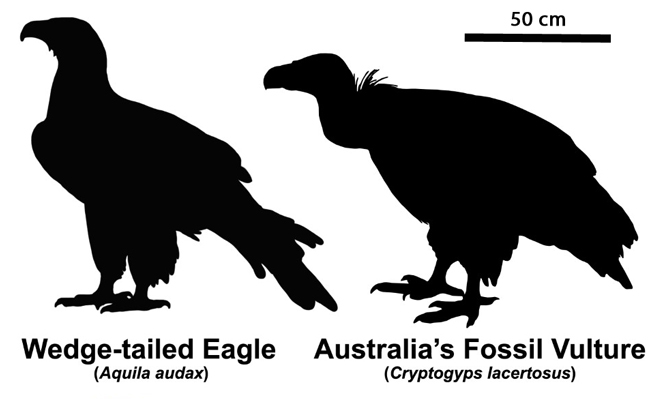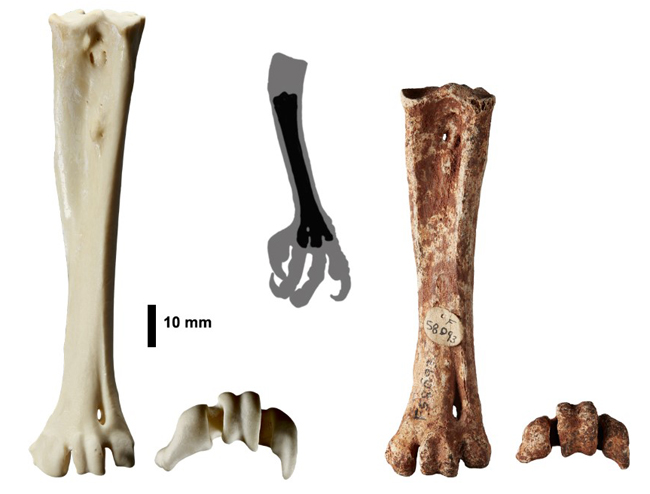Today, Australia has no vultures, but in the Pleistocene Epoch it did. Researchers have reclassified fossil remains and identified Australia’s first fossil vulture. The bird, which probably stood around one metre tall, has been named Cryptogyps lacertosus. The scientific name translates as “powerful hidden vulture”, reflecting the fact that its fossils had been hiding in plain sight for more than a hundred years.

Fossil Vulture Hiding in Plain Sight
Researchers from Flinders University and the South Australian Museum writing in the academic journal “Zootaxa” have reassessed fossil material first described by the English ornithologist Charles Walter de Vis in 1905 and named as “Taphaetus lacertosus”. The ornithologist thought the partial humerus and fragmentary skull bones found in north-eastern South Australia represented an ancient eagle and he named the bird “powerful grave eagle”.
The scientists were able to study fossils from the Wellington Caves of New South Wales and material recovered from the Nullarbor Plain of Western Australia including a lower leg bone (tarsometatarsus), which when compared to the lower leg bones of living birds of prey, it became clear that the fossil tarsometatarsus did not support the musculature required to despatch prey.

Lead author of the paper, Dr Ellen Mather (Flinders University) commented:
“We compared the fossil material to birds of prey from around the world, and it became clear right away that this bird was not adapted to being a hunter, and so it was not a hawk or an eagle.”
A Phylogenetic Analysis
A phylogenetic analysis placed C. lacertosus within the subfamily Aegypiinae, making it an Old World Vulture related to extant birds found in Africa, Asia and Europe. The identification of Cryptogyps lacertosus as an Old World Vulture significantly expands the palaeogeographical range of the Old World vultures, previously unknown in Australia and indeed, there are no vultures in Australia today.
Given the megafauna that existed on the continent until very recently, giant kangaroos, flightless thunder birds, huge wombats such as Diprotodon and the enormous monitor lizard Megalania, the presence of vultures in the Pleistocene ecosystem had been predicted.
Everything Dinosaur acknowledges the assistance of a media release from Flinders University in the compilation of this article.
The scientific paper: “A new look at an old Australian raptor places “Taphaetus” lacertosus de Vis 1905 in the Old World vultures (Accipitridae: Aegypiinae)” by Ellen K. Mather, Michael S. Y. Lee and Trevor H. Worthy published in Zootaxa.






Leave A Comment